When developing the lighting design of this room, pay attention to the combination of several light sources. See how stylish and impressive the sconces look in the interior of the kitchen.
Properly selected devices will make the surrounding space bright and spectacular. It remains only to find out how to choose a sconce for your kitchen.
Place to place a sconce
Properly selected light sources will become your faithful assistant in zoning space.
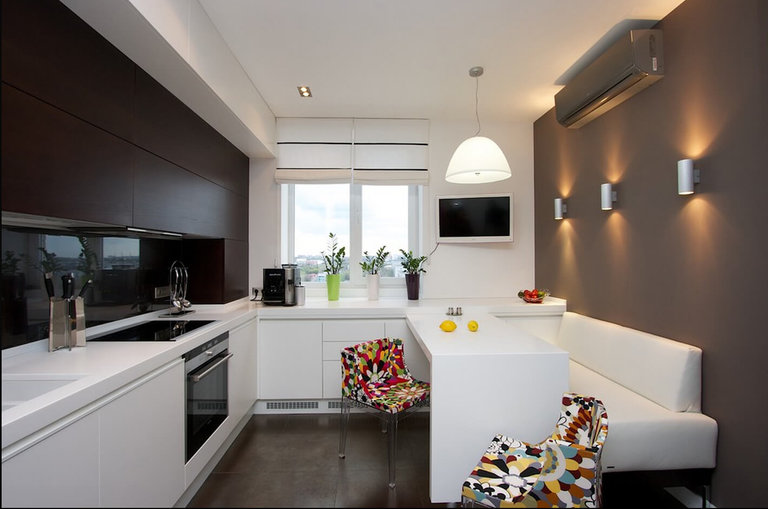
In the kitchen, attention can be focused on the work area (kitchen set) or the dining area. You can also allocate a place of rest, if you have it provided.
To achieve this goal, hang a chandelier above the table, and install two sconces on the wall next to it.
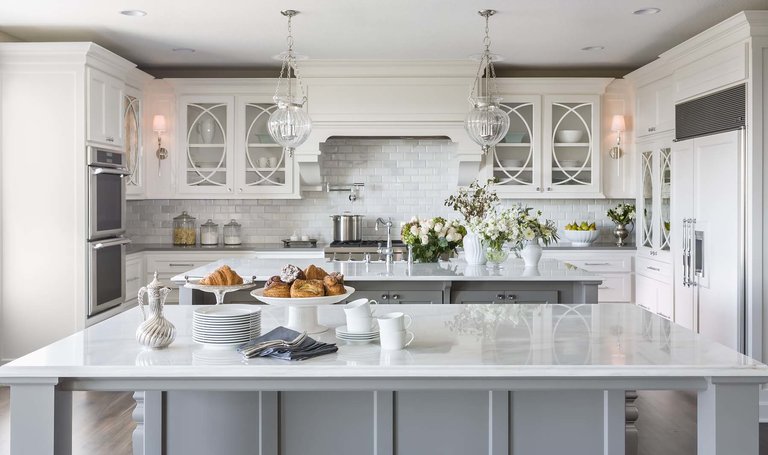
Recessed lights come in handy when arranging the food preparation area. Also hang two wall lamps above the sofa.
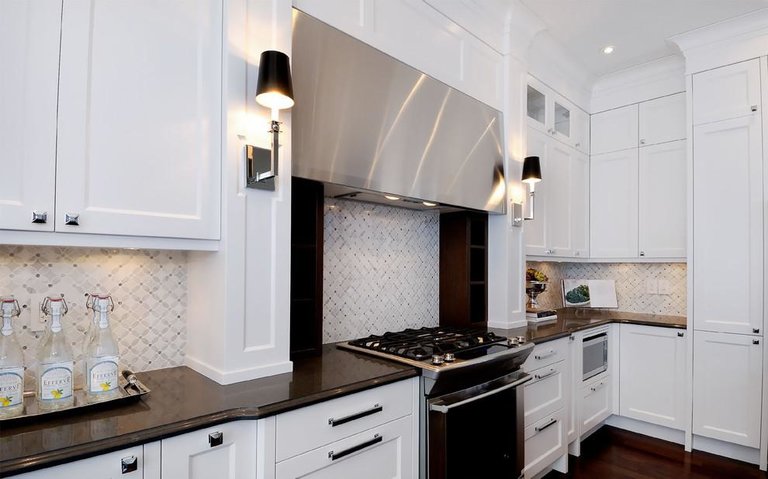
Local lamps are useful not only for zoning the room, but also for creating the most uniform lighting in the room, which guarantees a comfortable stay.
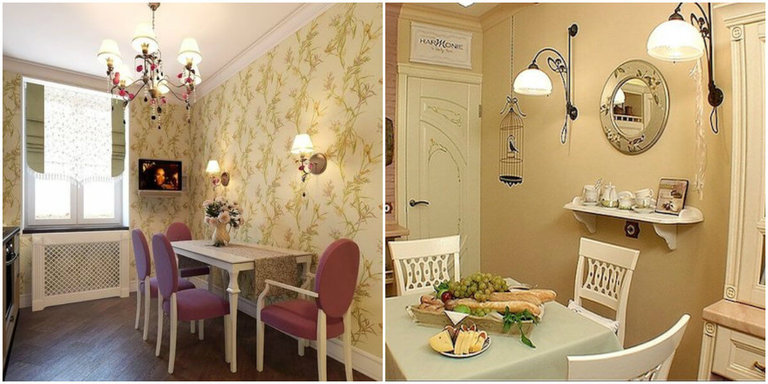
This is especially true for spacious rooms. Sconces can be hung along one wall at an equal distance from each other.
If your kitchen is combined with the dining room, then additional lighting may be required above the sideboards, paintings. This will help to harmoniously combine two rooms into one, as well as correctly place accents in it.
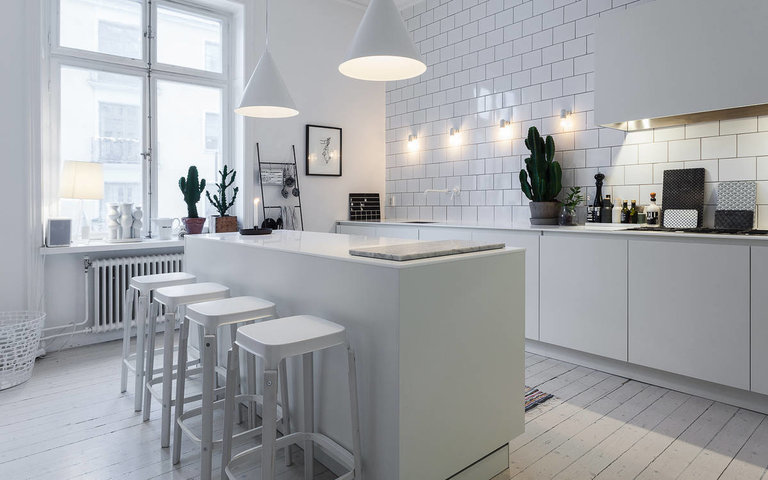
Low ceilings are not the best option for installing a central chandelier. You can completely refuse it by placing several wall lamps around the perimeter of the kitchen. Don't forget to set aside a eating area.
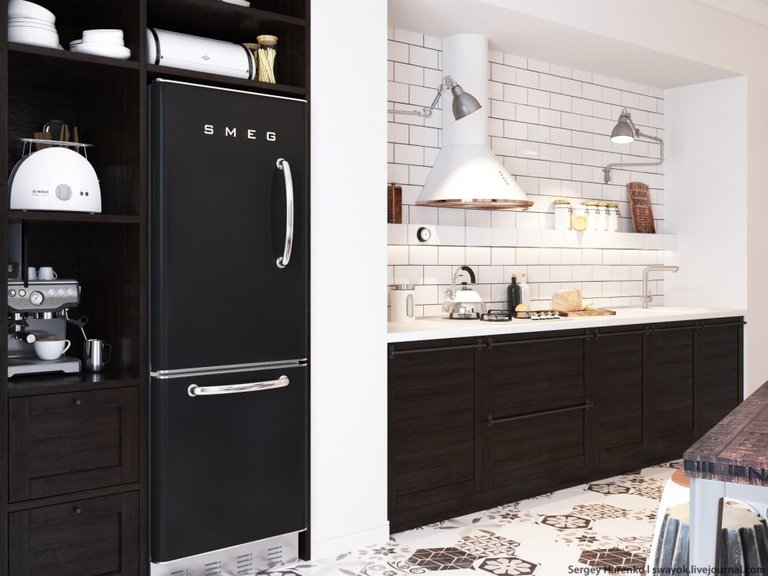
Remember: the light coming from only one ceiling lamp will visually narrow the walls, so you should not use the chandelier itself in small and narrow rooms.
Even a couple of wall sconces will make the lighting as uniform as possible, which will visually increase the dimensions of the room.
Wall lamps can be used to illuminate paintings and photographs hung on the walls, as well as unusual decorative elements that you would like to emphasize.

If you have open shelves instead of upper cabinets in the headset, or if you have completely preferred a single-level kitchen, then you can safely install sconces directly above the worktop.

You can also hang sconces above the bar, above the stove, on the free sides of the cabinets. Places for installing sconces are just the sea, so you need to proceed from the individual features of the kitchen configuration and personal preferences.
If you want to create cozy and comfortable lighting, hang the sconces lower. But at the same time, the room will visually become smaller. If you hang the lamps higher and direct the luminous flux upwards, then the kitchen will seem more spacious.
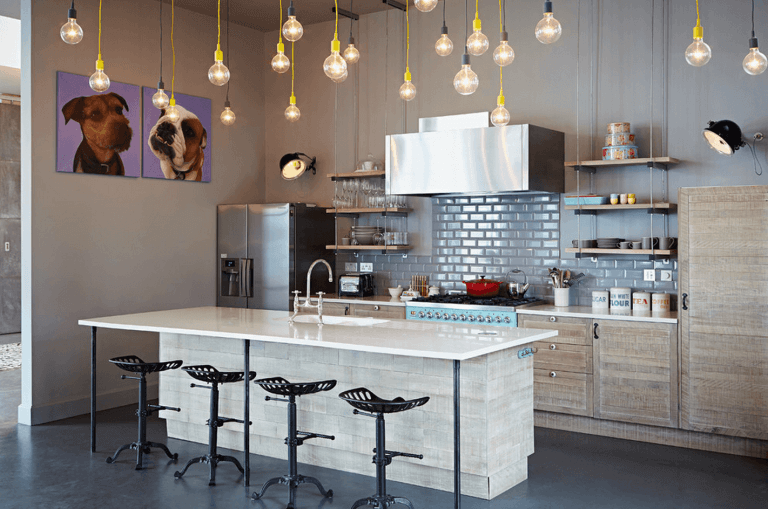
Visually adjusting the size of the room in a big way will also help the installation of several wall-mounted devices at the same height and with a certain step from each other. This will be especially relevant for narrow kitchens, the walls of which are painted with rather dark paint.
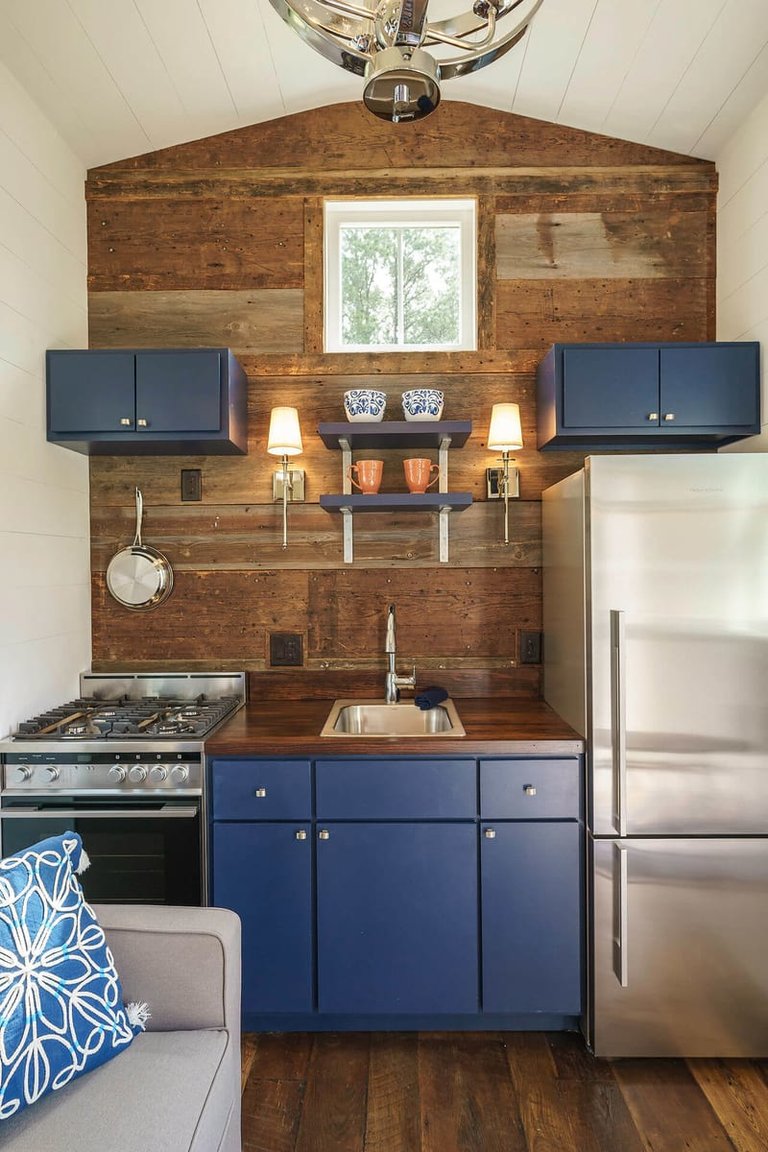
To design your kitchen as harmoniously as possible, choose sconces and chandeliers from one designer collection.
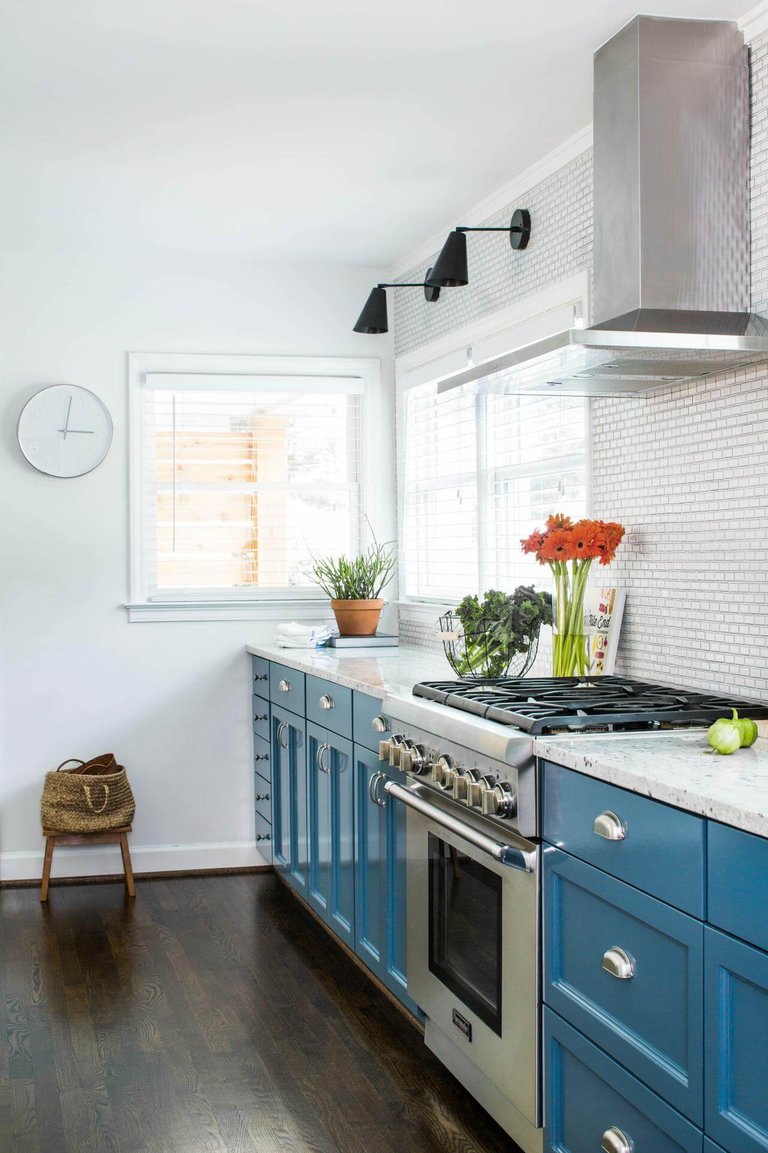
If you have not found a suitable kit for yourself, you can also choose dissimilar lamps that would be in harmony with each other in style, shape, colors and material.
Light direction
The effectiveness of lighting design will largely depend on how correctly the shades are selected and where the light flux is directed.
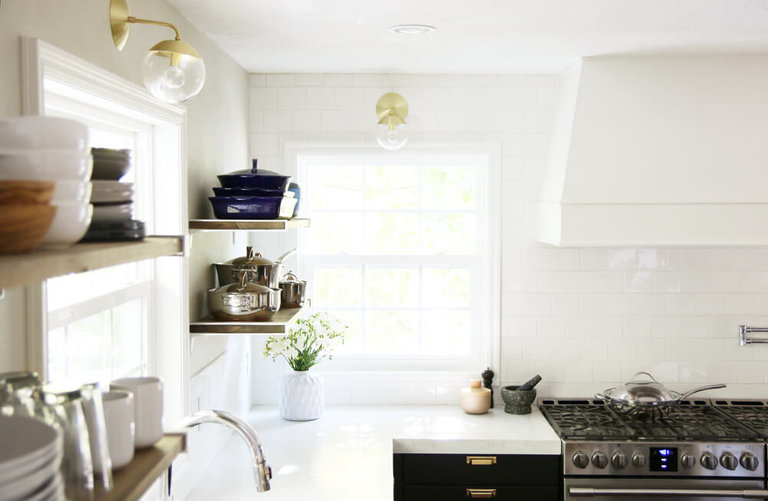
If you choose luminaires with solid shades that completely cover the lamps, then they will emit a softer light.
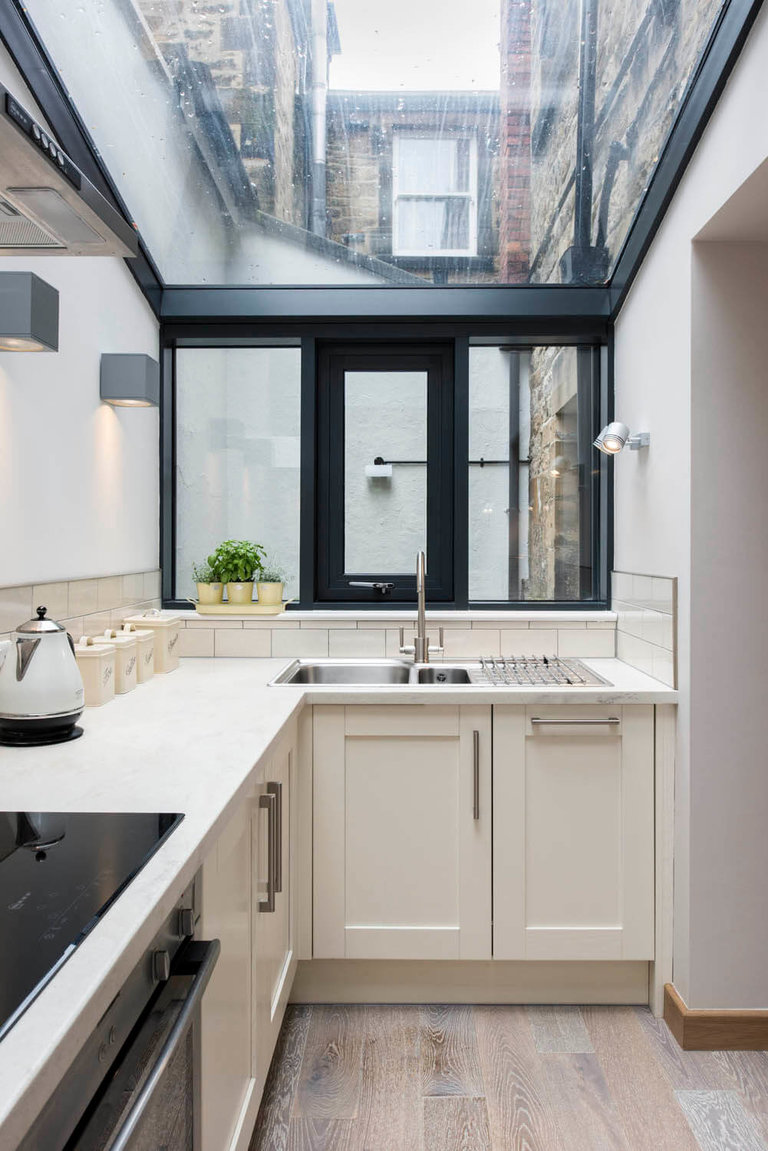
If diffusers are installed in your sconce only at the bottom, then the light will go as far as possible to the ceiling and the upper part of the wall. This solution is suitable for those who want to create not local, but general lighting.
Lamps closed from above with a ceiling will direct the flow down. Such lamps are suitable for creating lighting of functional areas. So that they do not blind your eyes, give preference to frosted lamps.
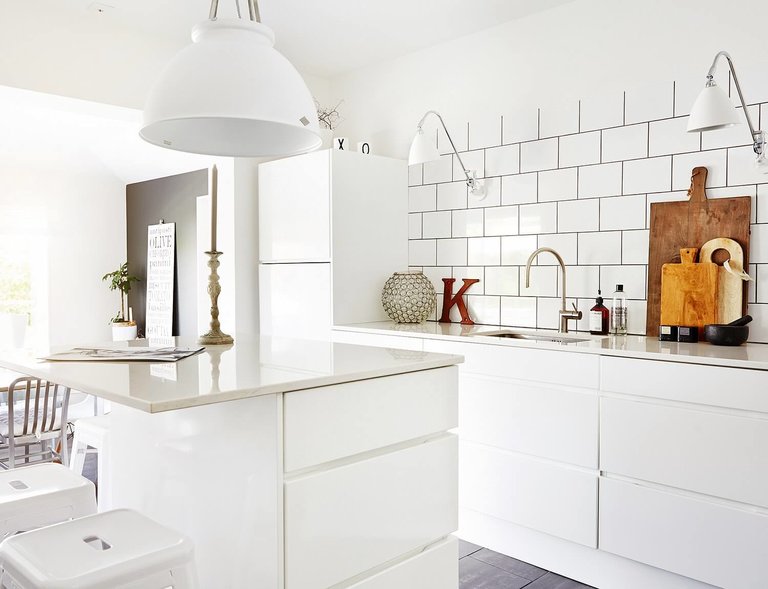
There are quite a lot of sconces on the modern market with the function of redirecting the light flux up or down, through diffusers or a ceiling. This is a universal option for many, because it allows you to create both local and general kitchen lighting.
Design and materials
Ease of care is one of the key requirements for lighting fixtures installed in the kitchen.
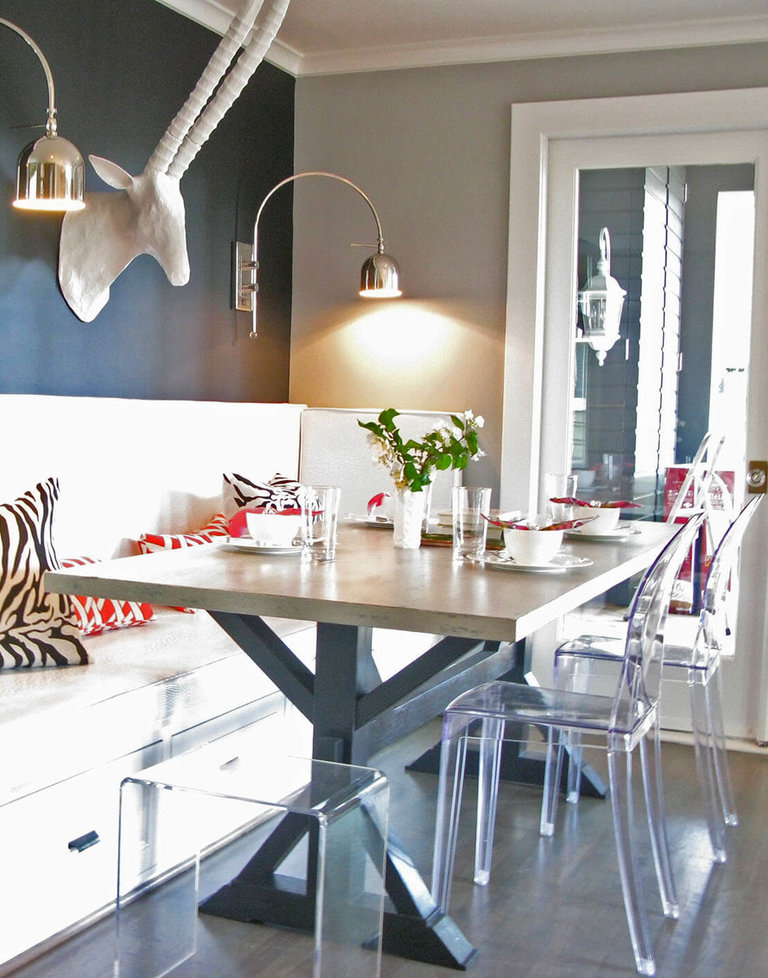
Refuse fabric lampshades, because it will be difficult to avoid droplets of fat and burning on them, which will lead to premature loss of aesthetics and attractiveness.
Do you prefer wooden elements? Be sure to pay attention to the presence of a layer of protective varnish. Forged elements must also be coated with a special mastic that provides reliable protection of the metal from soot and other contaminants.
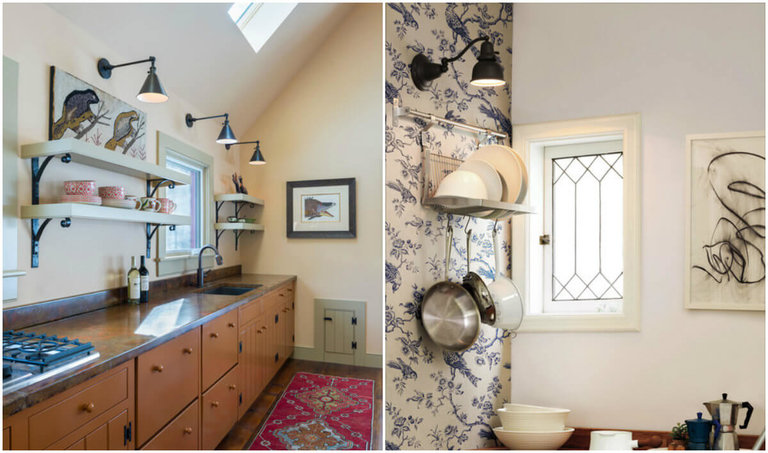
Shiny chrome or gold-plated brackets will leave fingerprints. Under the influence of light, various contaminants will be clearly visible. Consider hanging these sconces above your dining table or in your work area.
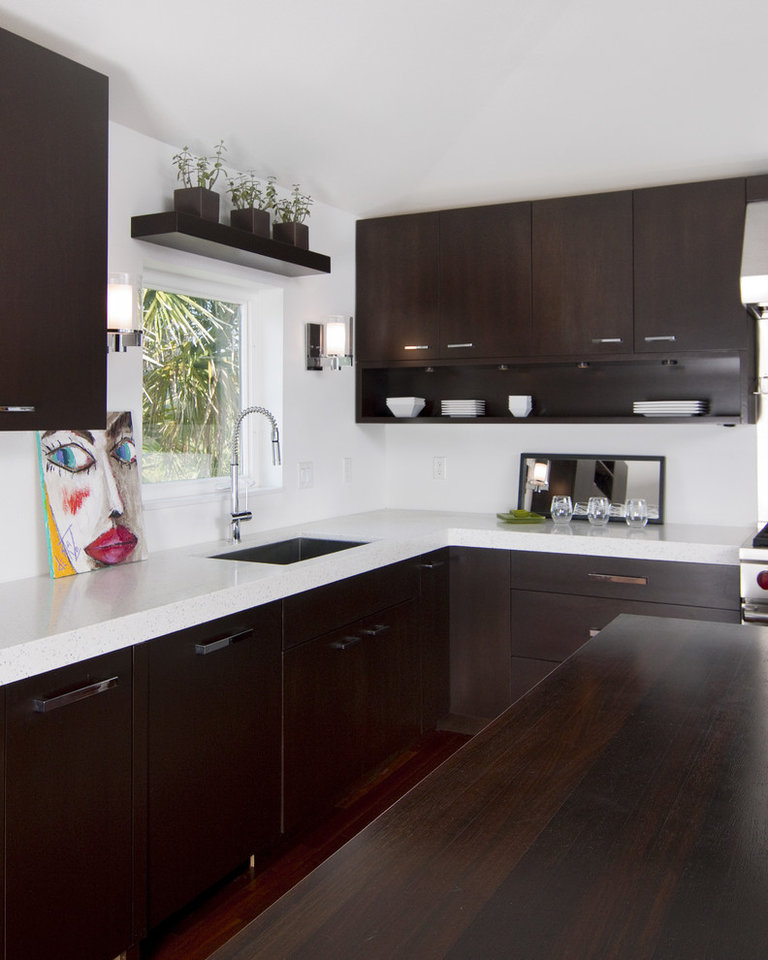
Classic models with glass, crystal or plastic are also not a suitable option for the work area. Regularly switched on the hood will help you protect the surface of the sconce from fatty deposits.
Having stopped the choice on classical lamps in the form of candles. Pick up matte lamps for them. They will not blind the eyes, but will create a soft light.
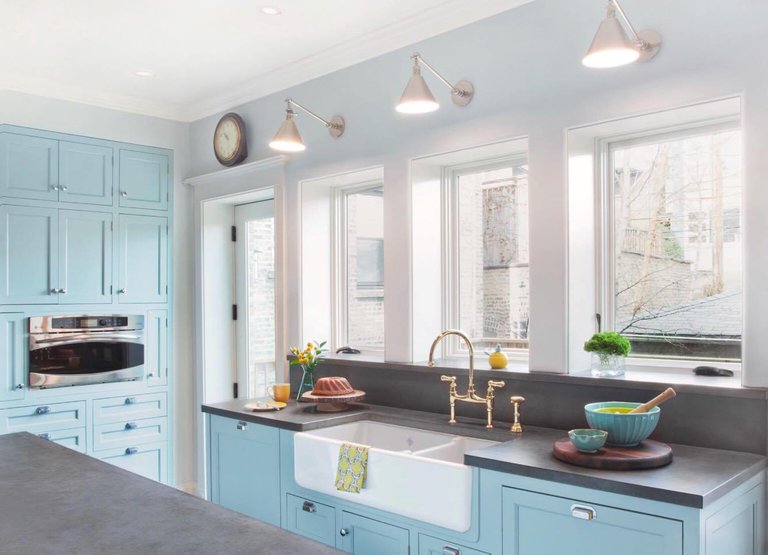
Lamps with shades of warm neutral tones are best placed above the dining table. Under such influence, your culinary masterpieces will look even more appetizing.
Transparent glass of purple or lilac color is not the best solution. Refuse them if you do not want to worsen the appetite of your household.
recessed lamps
The power and type of lamps are also important selection criteria. For a 10-square kitchen, the optimal indicator is a luminous flux of 120 watts.
Incandescent lamps in terms of their luminescence spectrum are the most optimal for the eyes, but they are too energy-consuming. In addition, they have a short service life.
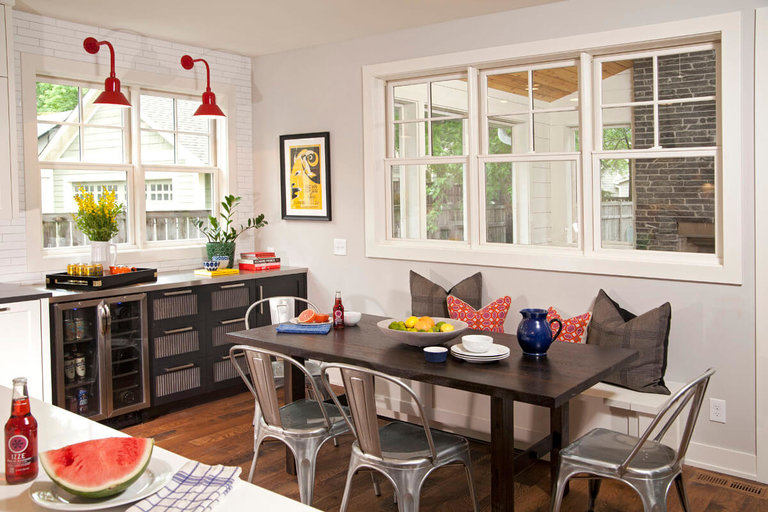
Cold glow luminescent models emit too bright a beam, which can be tiring for the eyes.
When thinking about which lamps to choose, transparent or matte, pay attention to the ceiling lamp.
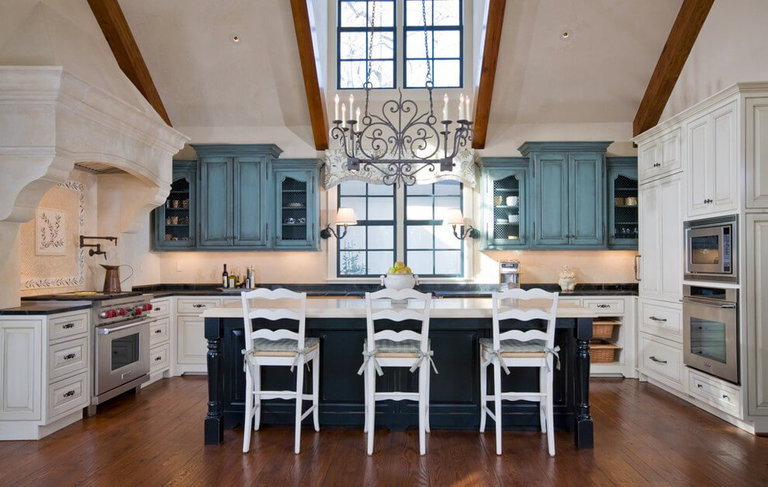
If it has holes or slots, then you can choose transparent models. Thanks to this tandem, original patterns of shadows will appear on your ceiling and walls.
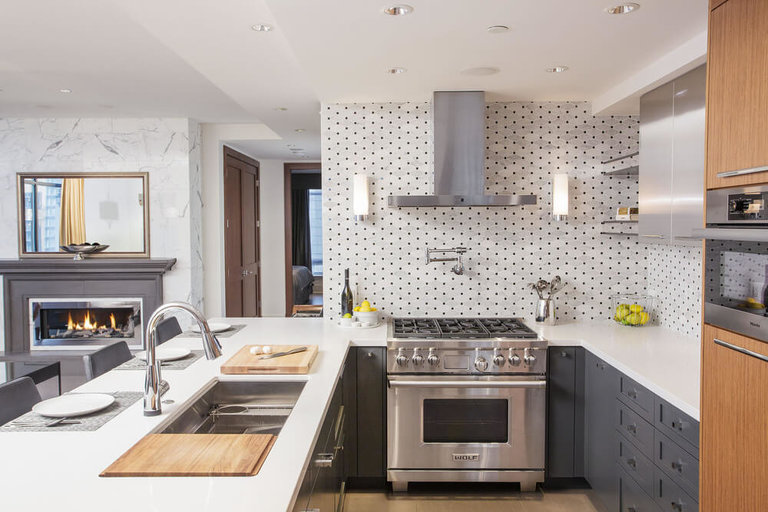
If the luminaire does not provide for a diffuser, lampshade, or ceiling lamp, then a matte lamp will be the best solution.
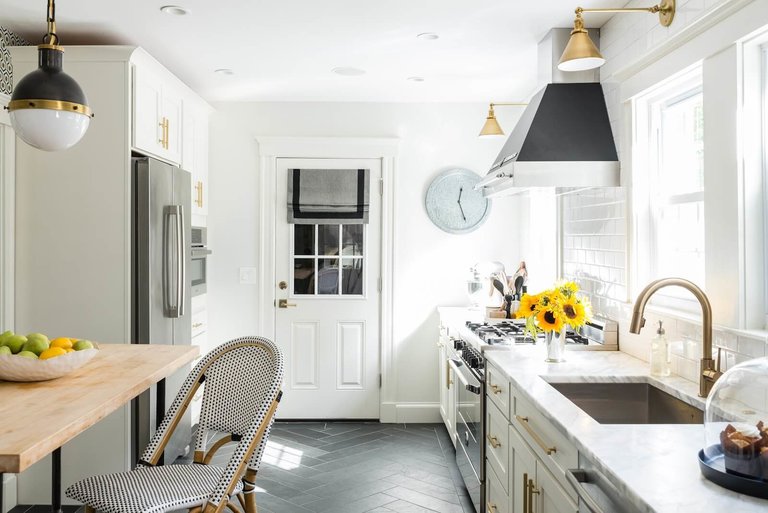
For sconces installed in the area of the working surface, lamps that emit a luminous flux in the cold spectrum are suitable, while it is better to illuminate the eating area with muted warm shades.
Optimal Height
If you refuse the central chandelier in favor of a sconce, then you should install them around the perimeter of the kitchen at a height of 1.7-2 meters from the floor. They should not be at the level of your eyes, so as not to blind.
Plan to place the switch so that you can easily reach it.
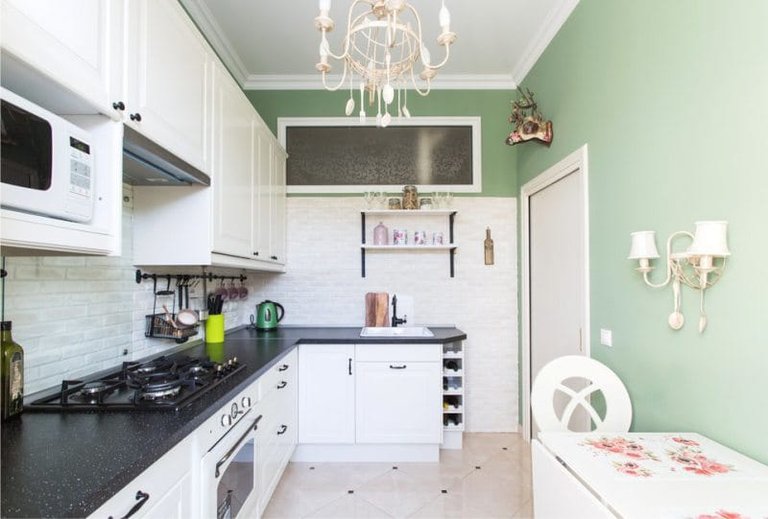
By installing sconces over chairs in the dining area, the height can be adjusted so that the device is slightly above the head of the seated person.
Installation Features
It is necessary to select lighting devices and plan their placement around the room even at the repair stage. This is also relevant for sconces.

Two or even more cable exit points should be provided, depending on the design features of the luminaire.
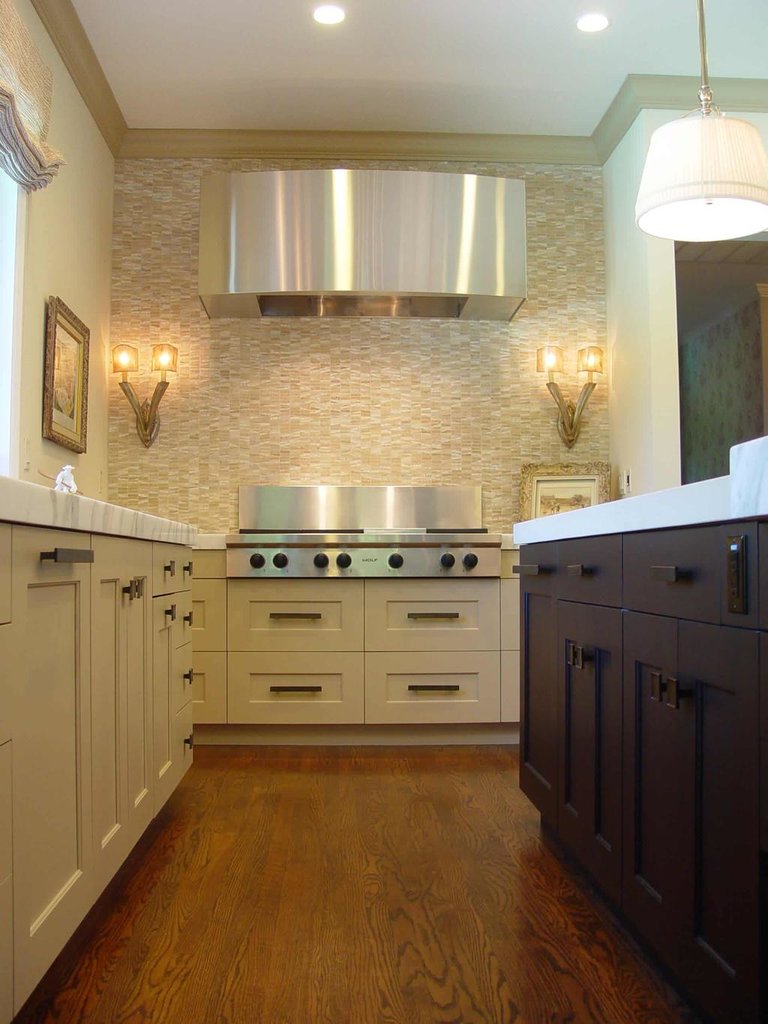
Draw to scale on a sheet or in a special computer program a three-dimensional model of your kitchen, putting all the installation locations of appliances, as well as their switches.
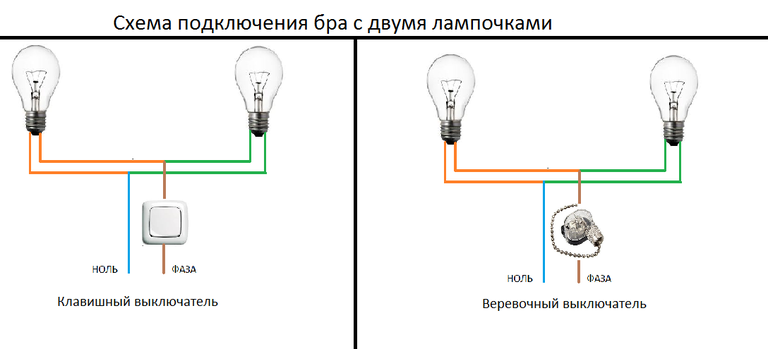
After the repair is completed, you will no longer be able to hide the wires, which will not only spoil the aesthetic picture, but will also interfere with you.
If it turns out that you still come to install the sconces after the walls are fully decorated, cover the cables with special plastic boxes. Of course, they will remain noticeable, but still they will not be as conspicuous as the wires themselves.
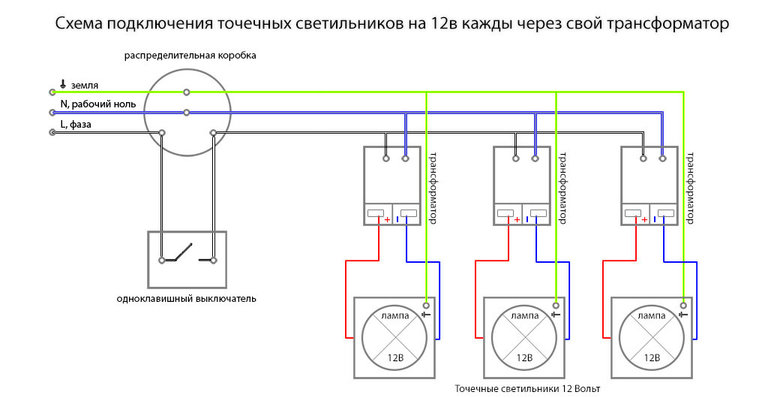
How to install a sconce with your own hands
Would you like to install a wall light yourself? Stock up on a wire of the required length, a puncher, a screwdriver, a drill, a hammer, a voltage indicator, as well as fasteners, in particular screws and dowels.
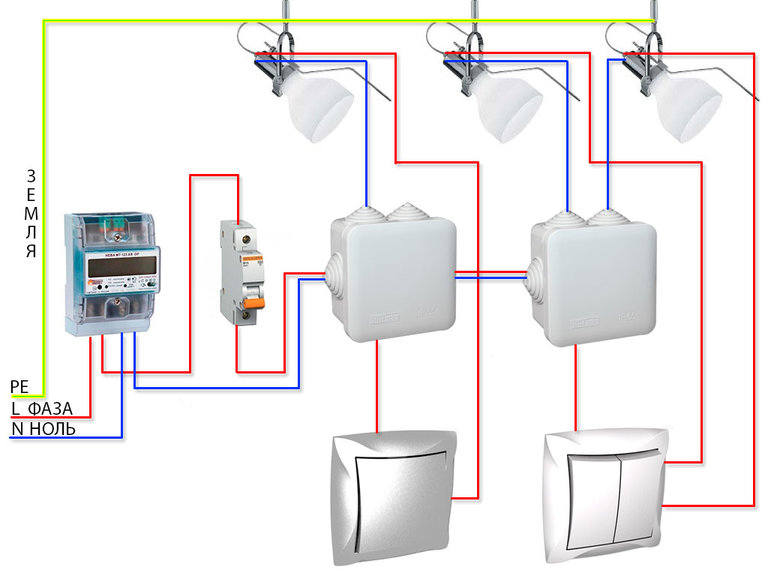
We perform several steps in sequence:
- mark on the wall the direct location of the lamp;
- assemble the sconces into a one-piece structure, as indicated in the instructions;
- turn off the power supply;
- mark the mounting locations for the fasteners and make the appropriate holes for the bracket or plate supplied with the luminaire;
- install dowels in the holes and hang sconce fasteners on them;
- connect the cartridge to the wires brought out of the wall using a tester to determine the phase and neutral cable;
- connect the remaining components of the lamp to the cartridge;
- check the operation of the device.

After completing these works, you will only have to make sure how stylish and impressive the sconces look in the interior of the kitchen.

